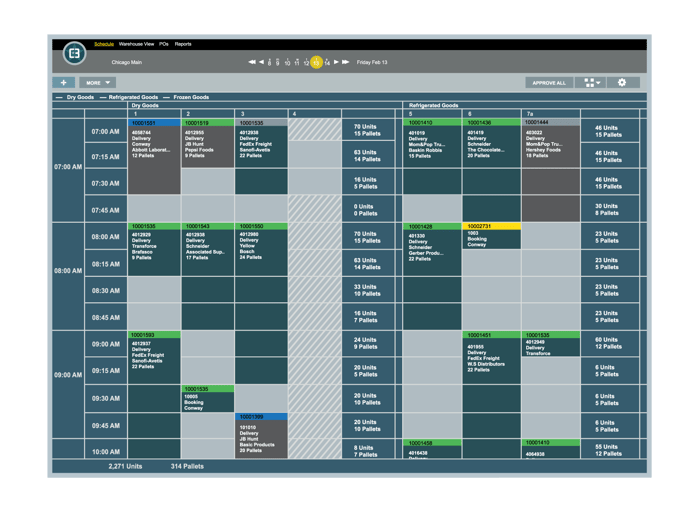Dock Scheduling vs Appointment Management: What Works for You?

So you have reached the conclusion that you need some help to optimize your appointment process? You are now searching for possible solutions that will streamline scheduling operations between your business and your vendors as well as your carriers. Which system out there will meet your needs?
But wait…do you know what you need? Various solutions can be found. They usually can be divided in two main categories: appointment management and dock scheduling.
Appointment Management
This usually takes the form of a spreadsheet or commonly available online calendar (such as Outlook) that tracks the time slots your carriers want at your dock. It has to be managed by a human scheduler, who keeps track of changes, conflicts and keeps it up to date.
An appointment management system can definitely save money by preventing bottlenecks at the dock and ensuring labor levels are adjusted to meet expected demand. In the hands of a skilled and attentive scheduler such a system can work quite efficiently.
However, its drawbacks include:
- The challenge of keeping an up-to-date version where various internal stakeholders can access the information it contains.
- Carriers still have to be notified by phone or email when a change is needed.
- Communications errors can happen in a manual system, especially when things get busy.
- You need to have perhaps more than one full-time scheduler on staff.
- If your scheduler gets sick or quits, you'll be scrambling.
Dock Scheduling
Dock Scheduling moves beyond appointment management by enabling sophisticated prioritization of customers, suppliers, loads, product types, carriers, and more, depending on your specific business needs. In essence, it’s a capacity planning tool; or a smart-schedule.

It allows direct communication between the system and carriers, and enables real-time visibility via a web portal to anyone who needs it, including carriers, suppliers, internal staff, or customers. Its communications abilities mean that phone calls, faxes and emails between your staff and carriers are eliminated.
A dock scheduling system can also have reporting capabilities that include audits on loads delivered, enabling quality assurance information to be recorded and transmitted.
Now, you might have the following questions:
- How to determine whether you need a dock scheduling system?
- What are your potential cost savings?
- Where should you start?
- Which solution is best for your business?
- What are other businesses doing?
These are all questions addressed in our latest white paper:

